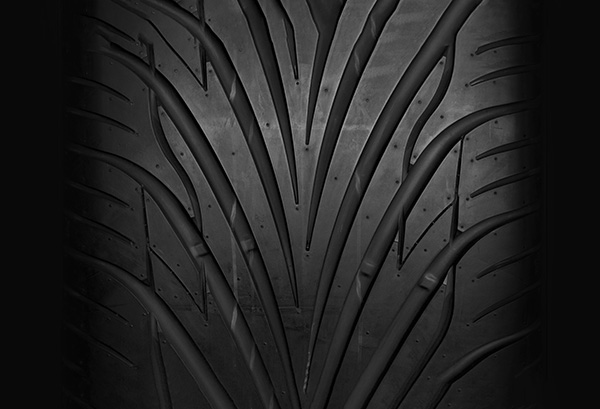
Your tires are the only point of contact between your vehicle and the road, making their condition crucial for safety and performance. One vital aspect of tire health is tread depth, which directly impacts traction and handling. Let's take a look at two straightforward methods to measure tire tread depth and ensure your tires are road-ready.
The Penny Test - A Classic Approach
Step 1: Grab a Penny
The penny test is a tried-and-true method for checking tire tread depth using nothing more than a common coin. First, locate a penny and ensure that President Lincoln's head is facing you.
Step 2: Insert the Penny
Place the penny into a tread groove with Lincoln's head facing down. Ensure that the penny is inserted with the top of Lincoln's head pointing toward the tire.
Step 3: Evaluate Tread Depth
Observe how much of Lincoln's head is visible above the tread surface. If the top of Lincoln's head is fully visible, it indicates that the tire tread depth is below the recommended minimum and the tire may need to be replaced.
Tread Depth Gauge - Precision Measurement
Step 1: Obtain a Tread Depth Gauge
Consider using a tread depth gauge, readily available at auto parts stores or online retailers for a more precise measurement. These tools provide accurate readings in millimeters or inches.
Step 2: Insert the Gauge
Insert the probe of the tread depth gauge into several tread grooves across the tire's surface, ensuring consistent measurements across the tread width.
Step 3: Read the Measurement
Read the measurement displayed on the gauge, indicating the remaining tread depth in millimeters or inches. Compare the measurement to the manufacturer's recommended minimum tread depth to assess tire condition.
Why Does Tire Tread Matter?
Tire tread depth is not just a matter of aesthetics; it's critical for maintaining traction and stability on the road. Adequate tread depth allows tires to channel water away from the contact patch, reducing the risk of hydroplaning on wet roads. Moreover, deeper tread provides better grip on dry surfaces, allowing for shorter braking distances and improved handling, especially in emergencies. Tire tread depth is the first line of defense against slippery conditions and plays a crucial role in keeping you safe on the road.
You Might Also Ask
How often should I check my tire tread depth?
To ensure optimal traction and safety, tire tread depth should be checked at least once a month and before long road trips.
What is the minimum tread depth for safe driving?
The minimum legal tread depth varies by jurisdiction but is typically around 2/32 of an inch. Many experts recommend replacing tires when the tread depth reaches 4/32 of an inch or less for optimal safety and performance.
Are there any signs besides tread depth indicating it's time to replace my tires?
Yes, signs such as uneven tread wear, bulges or cracks in the sidewall, vibration or shaking while driving, and visible damage or punctures may indicate the need for tire replacement, even if the tread depth is within acceptable limits.
If your tire treads are low or even completely gone, call Auto Masters Repair, LLC! We will get your car a new set of wheels in no time!